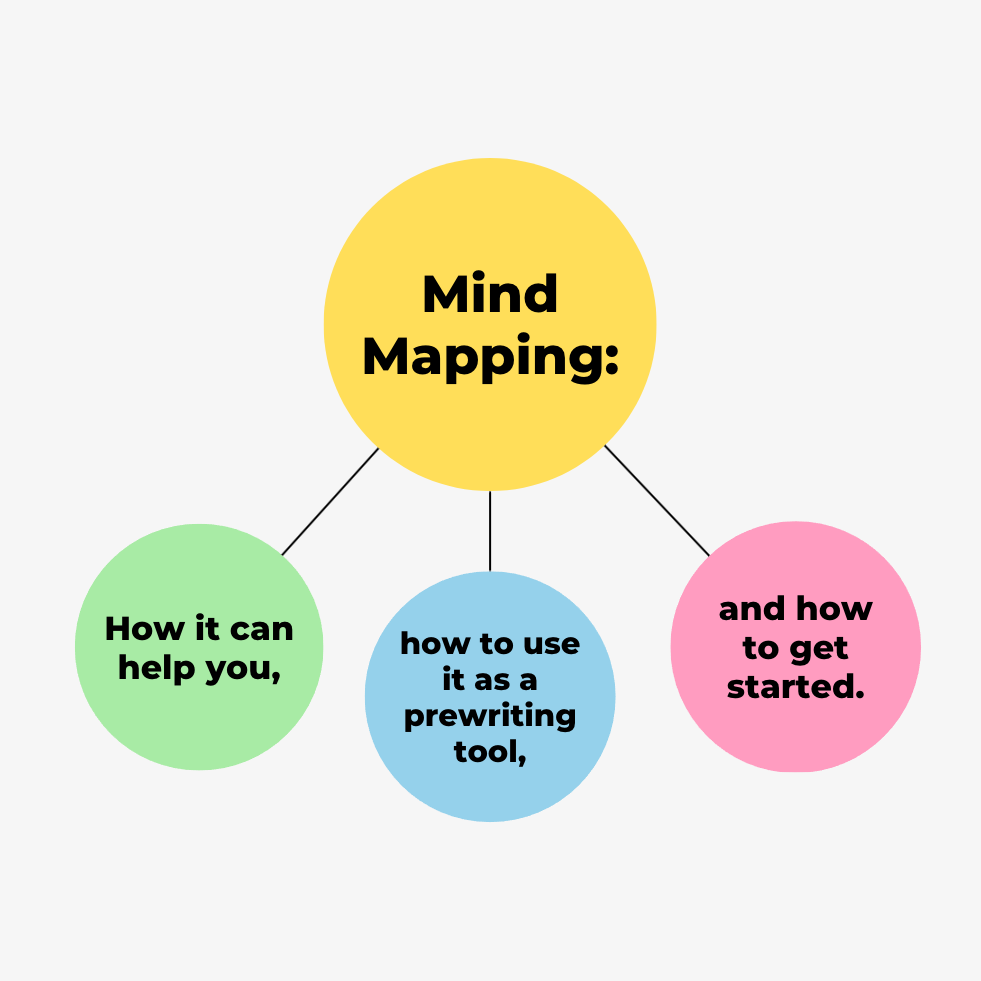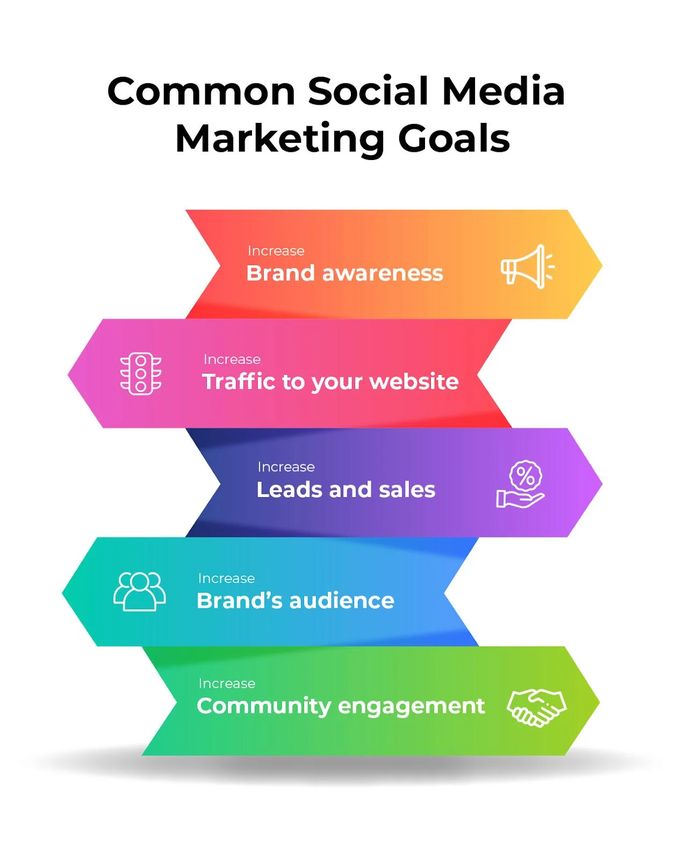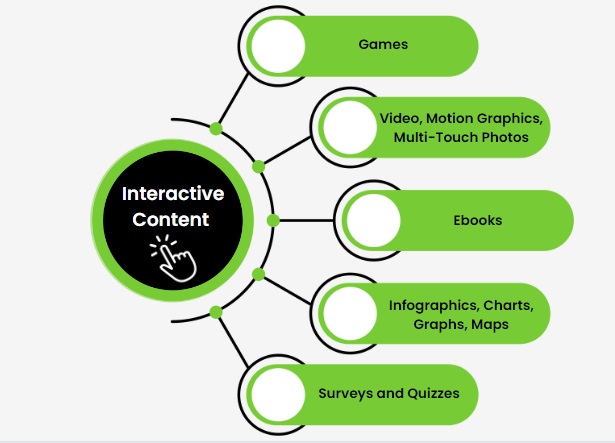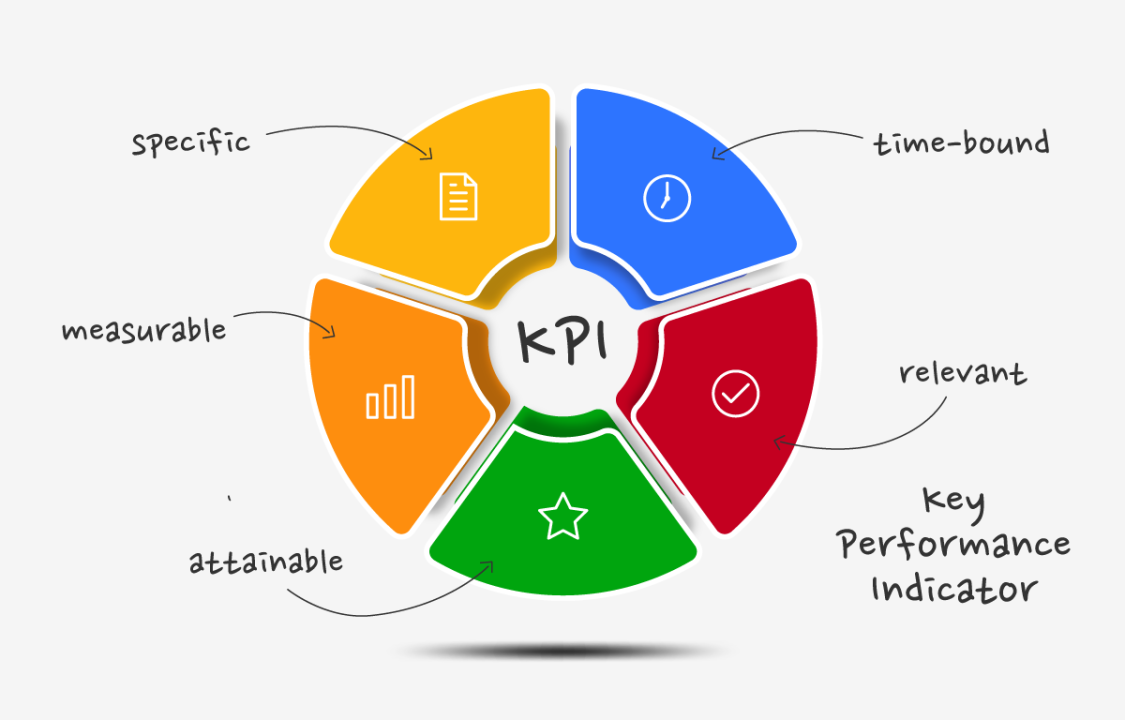Table of Content
No headings found.
Are you tired of struggling to create engaging content, such as social media posts, that captivates your audience with questions? Whether you're a seasoned writer or just starting in the world of content creation, this guide is tailored to help you craft compelling and impactful pieces that resonate with your readers.
From brainstorming ideas to polishing your final draft and creating evergreen content, we've got you covered every step of the way with tips and ways. Get ready to elevate your content creation game, start clicking, and leave a lasting impression on your audience with these tips!
Understanding Content Creation
Concept Overview

Content creation involves producing various forms of material to engage and inform people and share simple questions with an audience. Content creation can include evergreen blog posts, videos, infographics, podcasts, and social media posts. Creating valuable content for people requires understanding the target audience's needs, interests, and questions.
To create engaging content, consider using storytelling techniques, incorporating visuals like images or videos, and ensuring the information is relevant and well-structured. For instance, when creating a blog post, start with a catchy headline to grab readers' attention and use subheadings to break down the content into digestible sections.
Exploring different types of content creation allows for versatility in reaching diverse audiences. For example, while some people prefer reading blog posts for in-depth information, others may be more drawn to visual content like videos or infographics for quick consumption of information.
Importance
Content creation plays a vital role in online success by driving traffic to websites or social media platforms. By consistently creating high-quality content that resonates with people, businesses can increase their visibility online, attract more visitors, and start seeing results over time.
Moreover, quality content can help increase conversions by providing valuable information that educates potential customers about products or services. When customers find informative and helpful content on a website or social media page, they need time to trust the brand and make a purchase.
Establishing authority within a niche is another key benefit of content creation. By sharing expertise through blogs or videos regularly and social media content creation, individuals or businesses can position themselves as industry leaders, reaching people with relevant content. This helps build credibility among followers and establishes trust with the audience over time.
Planning and Strategy
Content Audit

A content audit is crucial for understanding the performance of your existing content. By evaluating metrics like engagement and conversion rates, you can pinpoint what works well and what needs improvement. Strategies for enhancing old content include updating information, improving SEO, or repurposing it into different formats to reach a wider audience.
When conducting a content audit, consider tools like Google Analytics to track page views, bounce rates, and time spent on each page. By analyzing this data, you can identify high-performing content that resonates with your audience.
Ideation

Ideation involves brainstorming creative concepts for new content pieces. Techniques like mind mapping or word association can help generate fresh ideas. Overcoming writer's block is possible by taking breaks, seeking inspiration from diverse sources, or collaborating with team members for input.
To manage content ideas effectively, utilize tools such as Trello or Google Docs to organize thoughts systematically. These platforms enable teams to collaborate seamlessly while keeping track of various concepts, topics, and time.
Strategy Development
Developing a content strategy aligns your content goals with overarching business objectives. This alignment ensures that every piece of content serves a purpose in reaching your target audience and achieving desired outcomes.
Key elements in creating a content strategy involve defining your target audience, selecting relevant topics based on market trends or consumer needs, establishing clear brand messaging guidelines, and setting measurable goals to track success over time.
Research and Analysis
Topic Selection

Choosing the right topics is crucial for engaging your audience. To do this effectively, you can start by conducting keyword research and content creation to identify what topics are popular among your target audience. By understanding what keywords they are searching for, you can tailor your content to match their interests.
Finding unique angles on popular subjects can set your content apart from competitors. For instance, if you run a food blog and notice that "easy dinner recipes" is a trending keyword, you could create content focusing on quick meals for busy weeknights.
SEO Research
SEO research plays a significant role in optimizing your content for search engines. Identifying high-ranking keywords relevant to your topic is essential for improving visibility online. By incorporating these keywords naturally into your content, you increase the chances of ranking higher in search engine results pages.
Analyzing competitor SEO strategies can also provide valuable insights into what works well in your industry. Tools like Google Keyword Planner or SEMrush can help you discover relevant keywords and understand search trends better.
Audience Analysis
Understanding your target audience is key to creating content that resonates with them. Conducting thorough audience research allows you to tailor your content specifically to their needs and preferences. By analyzing audience behavior and preferences, such as which type of content they engage with the most or what platforms they prefer, you can refine your content strategy accordingly.
For example, if you find out that most of your audience prefers video content over written articles, focusing more on creating videos might yield better results.
Writing Skills Enhancement
SEO Writing
Creating SEO-friendly content involves optimizing headlines, meta tags, and body text for search engines. Balancing keywords with natural language is crucial. For instance, using tools like Google Keyword Planner can help identify relevant keywords.
To enhance SEO, consider incorporating long-tail keywords into your content. These are specific phrases that target a particular audience. Focusing on creating valuable and informative content can improve search engine rankings.
Benefits of SEO writing:
- Higher visibility on search engines
- Increased organic traffic to your website
Unique Content
Crafting unique and original content offers numerous benefits, such as establishing credibility and building a loyal audience. Avoiding plagiarism by citing sources properly is essential. Adding a unique perspective to popular topics can set your content apart.
When creating unique content, ensure it provides value to your audience by addressing their needs or interests directly. Utilizing storytelling techniques can make your content more engaging and memorable.
Advantages of unique content:
- Improved brand reputation
- Higher chances of ranking well in search results
Engaging Posts
Developing engaging and shareable content creation posts is essential for attracting and retaining readers. Incorporating multimedia elements like images, videos, or infographics can enhance the visual appeal of your content. Crafting compelling stories through content creation helps create an emotional connection with the audience.
To increase engagement, encourage social sharing by adding social media buttons to your posts for easy sharing across platforms. Interacting with your audience through comments and feedback can also foster a sense of community around your content.
Tips for creating engaging posts:
- Use eye-catching visuals.
- Tell relatable stories.
- Encourage reader interaction through polls or questions.
Content Creation Tools
Writing Assistance

Utilizing writing assistance tools can significantly improve the quality of your text. These resources can help enhance your grammar, spelling, and overall writing style effortlessly. By using these tools, you can refine your content through effective editing and proofreading techniques. For instance, Grammarly is a popular tool that provides real-time suggestions for improving your writing.
Pros:
- Enhances grammar and spelling
- Improves writing style
Cons:
- May not catch all errors
Exploring various resources for writing assistance enables you to create polished content that captivates your audience's attention effectively.
Graphic Design
Understanding the importance of graphic design in content creation is crucial as visuals play a significant role in engaging audiences. Learning basic design principles and techniques allows you to create visually appealing graphics that complement your written content seamlessly. Utilizing tools like Canva or Adobe Spark can assist you in designing professional-looking visuals effortlessly.
Key Points:
- Visuals enhance audience engagement
- Basic design principles are essential
By incorporating captivating graphics into your content, you can elevate its appeal and convey information more effectively to your readers or viewers.
Video Editing
In the realm of content creation, video editing holds immense power in enhancing the quality of videos produced. Exploring beginner-friendly video editing software equips you with the necessary skills to create compelling visual content. Learning essential editing techniques such as adding captions, transitions, and special effects enhances the overall production value of your videos significantly.
Steps for Effective Video Editing:
- Select suitable video editing software.
- Learn basic editing functions.
- Experiment with adding captions and transitions.
- Enhance videos with special effects.
Mastering video editing techniques empowers you to produce engaging visual content that resonates with your target audience effectively.
Content Promotion
Social Media Strategies

Social media is crucial for content promotion. It can help you reach a broader audience with engaging content and engage with your followers effectively. By understanding how social media works, you can tailor your content to each platform's unique features. For example, on Instagram, visual content like images and short videos performs well, while Twitter is great for concise updates and sharing blog posts.
To amplify your content reach, consider using effective strategies such as creating engaging visuals, utilizing hashtags to increase visibility, and interacting with your audience through comments and direct messages. Building a community around your content involves fostering relationships with your followers by responding to their feedback promptly and encouraging discussions related to your content.
Pros:
- Broadens audience reach
- Enhances engagement with followers
- Builds a sense of community around the content
Cons:
- Requires consistent effort and monitoring
- Different platforms have varying algorithms that affect visibility
Repurposing Content
Repurposing existing content offers numerous benefits. By transforming blog posts into videos, infographics, or podcasts, you can cater to different audience preferences and extend the lifespan of your original content. For instance, turning content like a how-to article into a step-by-step video tutorial can appeal to visual learners.
Maximize the value of your content by repurposing it strategically. This approach allows you to reach new audiences across various platforms while reinforcing key messages from the original piece. Repurposed content can boost SEO efforts by providing search engines with more material to index.
Benefits of repurposing:
- Extends the lifespan of original content
- Appeals to different audience preferences
- Boosts SEO efforts through increased indexing opportunities
Interactive and Visual Storytelling
Visual Content

Visual content plays a crucial role in content creation by capturing the audience's attention effectively. Creating visually appealing images, illustrations, and photographs can significantly enhance engagement. For instance, using vibrant colors, high-quality graphics, and relevant imagery can make your content more captivating. Optimizing visual content for various platforms and devices is essential to ensure that it displays correctly across different screen sizes. This includes adjusting image dimensions, resolution, and file formats for optimal viewing.
Pros:
- Increases audience engagement
- Enhances brand visibility
- Improves information retention
Cons:
- Time-consuming to create
- Requires design skills or resources
Effective storytelling is a powerful tool in content creation, helping to establish connections with the audience on a deeper level. Incorporating storytelling techniques into your content can evoke emotions, convey messages more memorably, and keep readers or viewers engaged. By structuring your content as a narrative with a beginning, middle, and end, you can create a compelling story that resonates with your target audience. Whether through blog posts, videos, or infographics, storytelling adds depth and personality to your content.
Key Tips:
- Develop relatable characters or scenarios
- Create a consistent tone throughout the story
- Use cliffhangers or suspense to maintain interest
Storytelling Techniques
Storytelling techniques are essential in engaging audiences through content creation efforts. Understanding the importance of narratives helps you craft compelling stories that resonate with readers or viewers. By incorporating elements such as conflict resolution, emotional appeal, and relatable experiences into your content strategy, you can create impactful stories that leave a lasting impression on your audience.
- Start by outlining key plot points.
- Introduce characters that resonate with your target audience.
- Build tension or suspense to keep readers engaged.
- Conclude with a satisfying resolution that delivers value to the audience.
Advanced Content Creation Techniques
Interactive Content

Interactive content is essential for boosting engagement and interaction with your audience. By incorporating quizzes, polls, surveys, and interactive videos into your content creation strategy, you can captivate your viewers. For instance, creating a quiz related to your product or service can not only entertain but also educate your audience about what you offer.
Tools like Typeform and SurveyMonkey are perfect for designing engaging surveys and polls. Platforms such as Playbuzz or H5P allow you to create interactive videos that keep viewers hooked. Utilizing these tools can help you generate valuable insights from your audience while keeping them entertained simultaneously.
Pros:
- Enhances user engagement
- Provides valuable data insights
Cons:
- Requires time and effort to create
- May need additional resources for complex interactive features
Educational Material
Educational content plays a crucial role in establishing authority and expertise in your niche. Creating informative guides, tutorials, and how-to articles can position you as a knowledgeable source within your industry. For example, offering step-by-step tutorials on using your products can help customers understand their benefits better.
To present complex content information clearly, consider breaking it down into digestible chunks. Use visuals like infographics or diagrams to simplify intricate concepts for easier understanding by your audience.
Steps for creating educational material:
- Identify the topic or subject matter.
- Research thoroughly to ensure accuracy.
- Organize the information logically.
- Utilize visual aids to enhance comprehension.
- Review and edit content for clarity before publishing.
Analyzing and Improving Strategy
Content Improvement
Creating high-quality content is crucial for engaging your audience. To continuously enhance your content, analyze user feedback and metrics. By understanding what your audience likes or dislikes, you can identify areas for improvement. For example, if users frequently mention a lack of information on a specific topic, consider creating more in-depth content articles to address their needs.
Moreover, staying up-to-date with the latest trends is essential. Techniques like updating existing content with fresh information or optimizing it based on new insights can significantly boost its relevance and value. For instance, if a particular topic gains traction in your industry, incorporating it into your content strategy can attract more readers and improve engagement.
Pros:
- Enhanced user engagement
- Increased relevance and value of content
Cons:
- Time-consuming process
- Requires continuous monitoring and adaptation
Strategy Analysis

Analyzing the effectiveness of your content strategy is key to ensuring its success. Tracking key performance indicators (KPIs) allows you to measure the impact of your efforts accurately. By monitoring metrics such as website traffic, conversion rates, or social media engagement, you can gauge the performance of your content strategy over time.
Data-driven insights play a vital role in guiding strategic decisions. Techniques for adjusting your strategy based on these insights enable you to optimize performance continually. For example, if certain types of content consistently outperform others in terms of engagement, focusing more resources on creating similar content can lead to better results.
- Regularly review user feedback and metrics.
- Update existing content based on new trends.
- Monitor KPIs like website traffic and conversion rates.
- Adjust strategies according to data-driven insights.
Statistics on Content Creation:
According to a study by HubSpot, content marketing generates three times as many leads as traditional outbound marketing, but costs 62% less. This statistic highlights the effectiveness and cost-efficiency of content creation in driving leads and conversions.
Research by Demand Metric found that content marketing generates 3 times more leads than traditional marketing methods. This statistic emphasizes the significant impact that content creation can have on lead generation and customer acquisition.
Summary
You've now journeyed through the essential aspects of content creation, from understanding its core to refining advanced techniques. By mastering planning, research, writing skills, and utilizing tools for promotion and storytelling, you're well-equipped to create engaging content. Remember to analyze and enhance your strategies continually for optimal results.
Now is the time to put your newfound knowledge into action. Start creating remarkable content that resonates with your audience and drives success for your endeavors. Keep refining your skills, stay updated on industry trends, and never shy away from experimenting with innovative techniques. Your dedication to honing your craft will undoubtedly set you apart in the world of content creation.
Frequently Asked Questions
What is the importance of understanding content creation?
Understanding content creation helps in crafting valuable and engaging material that resonates with your audience, boosts online visibility, and establishes credibility in your niche.
How can content promotion enhance my online presence?
Content promotion ensures that your well-crafted material reaches a wider audience, drives traffic to your website, increases brand awareness, and ultimately leads to higher conversions.
Why is interactive storytelling crucial for effective content creation?
Interactive storytelling captivates audiences, enhances engagement levels, creates memorable experiences for users, and sets you apart from competitors by offering unique and immersive content.
How do advanced content creation techniques benefit my strategy?
Advanced techniques elevate the quality of your content, improve user experience, increase shareability on social media platforms, boost SEO rankings through relevant keywords usage and drive organic traffic to your site.
Why is analyzing strategy essential for optimizing content performance?
Analyzing strategy allows you to track the effectiveness of your efforts, identify areas for improvement based on data insights, refine future campaigns for better results, maximize ROI and stay ahead in the competitive digital landscape.
Free Press Release Template
Tell us where to send your PDF:







